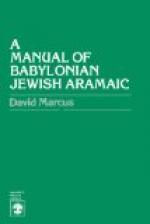Make into a batter one ounce and a half of potatoe flour, with the same quantity of grated cheese and of butter, and a quarter of a pint of milk or cream; add a little salt, very little pepper, and the well-beaten yolks of four fine fresh eggs; when all this is well mixed together, pour in the whites of the eggs, well whisked to a froth; pour the mixture into a deep soup plate or dish, used expressly for the purpose, and bake in a moderate oven. The dish should be only half filled with the fondu, as it will rise very high. It must be served the moment it is ready, or it will fall. It is a good plan to hold a salamander over it while being brought to table.
* * * * *
PETITS FONDEAUS.
Make a batter as for a fondu, but use rice flour or arrow root instead of potatoe flour; add the egg in the same manner as for a fondu, and pour the mixture into small paper trays fringed round the top. The mixture should only half fill the trays or cases.
CHAPTER VI.
Pastry.
DIRECTIONS FOR MAKING PASTE.
To make good light paste requires much practice; as it is not only from the proportions, but from the manner of mixing the various ingredients, that paste acquires its good or bad qualities.
Paste should be worked up very lightly, and no strength or pressure used; it should be rolled out from you, as lightly as possible. A marble slab is better than a board to make paste on.
The flour should be dried for some time before the fire previously to being used. In forming it into paste it should be wetted as little as possible, to prevent its being tough. It is a great mistake to imagine lard is better adapted for pastry than butter or clarified fat; it may make the paste lighter, but neither the color nor the flavor will be nearly so good, and the saving is extremely trifling.
To ensure lightness, paste should be set in the oven directly it is made.
Puff paste requires a brisk oven.
Butter should be added to the paste in small pieces.
The more times the paste is folded and rolled, if done with a light hand and the butter added with skill, the richer and lighter it will prove. It is no longer customary to line the dish for pies and fruit tarts.
* * * * *
PLAIN PUFF PASTE.
Mix a pound of flour into a stiff paste with a little water, first having rubbed into it about two ounces of butter, then roll it out; add by degrees the remainder of the butter (there should be altogether half a pound of butter), fold the paste and roll about two or three times.
* * * * *
VERY RICH PUFF PASTE.
Mix in the same manner equal quantities of butter and flour, taking care to have the flour dried for a short time before the fire; it may be folded and rolled five or six times. This paste is well suited to vol-au-vents and tartlets; an egg well beaten and mixed with the paste is sometimes added.




